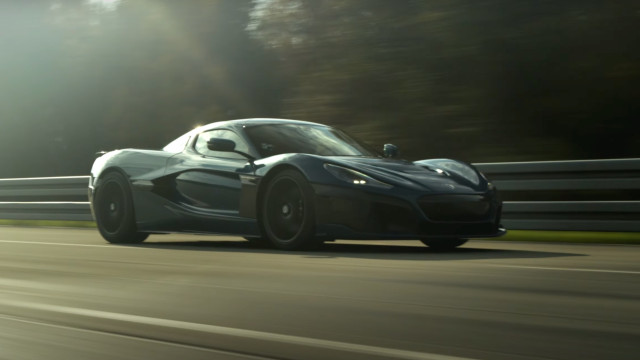The Rimac Nevera is a beast of a car. It has a top speed of 258 mph, a 0-60 mph time of 1.85 seconds, and a whopping 1,914 horsepower. But that's not all. The electric hypercar can also go insanely fast in reverse.
In fact, it can go so fast that it has set a new world record for the fastest reverse speed ever achieved by a production car. The Nevera reached an astonishing 171 mph while driving backwards at the Elvington Airfield in the UK. That's faster than most cars can go forward.
The record was verified by Guinness World Records and the UK Timing Association. The driver was Rob Gill, a journalist and presenter who had the opportunity to test the Nevera's capabilities. He said he was amazed by the car's performance and stability, even at such high speeds.
The Nevera's reverse speed record is not just a gimmick. It showcases the car's advanced technology and engineering, which allow it to have full torque vectoring and regenerative braking on all four wheels. This means that the car can control the power and braking of each wheel independently, giving it unparalleled agility and responsiveness.
The Nevera is also equipped with a sophisticated battery system that can deliver 2.3 megawatts of power and store 120 kWh of energy. The battery is designed to withstand high temperatures and extreme G-forces, as well as to provide consistent performance throughout the car's range.
The Rimac Nevera is a masterpiece of innovation and craftsmanship. It is the result of 10 years of development and refinement by the Croatian company Rimac Automobili. Only 150 units will be produced, each costing around $2.4 million. The Nevera is not just a car, it is a statement of what is possible in the realm of electric mobility.
The Rimac Nevera is a beast of a car. It has a top speed of 258 mph, a 0-60 mph time of 1.85 seconds, and a whopping 1,914 horsepower. But that's not all. The electric hypercar can also go insanely fast in reverse.
In fact, it can go so fast that it has set a new world record for the fastest reverse speed ever achieved by a production car. The Nevera reached an astonishing 171 mph while driving backwards at the Elvington Airfield in the UK. That's faster than most cars can go forward.
The record was verified by Guinness World Records and the UK Timing Association. The driver was Rob Gill, a journalist and presenter who had the opportunity to test the Nevera's capabilities. He said he was amazed by the car's performance and stability, even at such high speeds.
The Nevera's reverse speed record is not just a gimmick. It showcases the car's advanced technology and engineering, which allow it to have full torque vectoring and regenerative braking on all four wheels. This means that the car can control the power and braking of each wheel independently, giving it unparalleled agility and responsiveness.
The Nevera is also equipped with a sophisticated battery system that can deliver 2.3 megawatts of power and store 120 kWh of energy. The battery is designed to withstand high temperatures and extreme G-forces, as well as to provide consistent performance throughout the car's range. The Nevera has an estimated range of 340 miles on a single charge, which is impressive for such a powerful vehicle.
The Rimac Nevera is a masterpiece of innovation and craftsmanship. It is the result of 10 years of development and refinement by the Croatian company Rimac Automobili. Only 150 units will be produced, each costing around $2.4 million. The Nevera is not just a car, it is a statement of what is possible in the realm of electric mobility.







Comments
Post a Comment